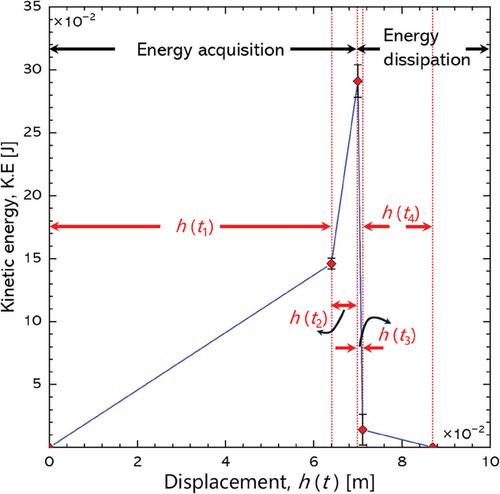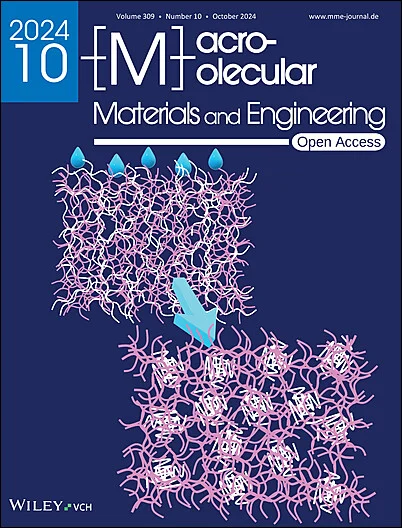家蚕蚕茧的抗刺性研究
摘要
本研究考虑了家蚕蚕茧对刀刺的机械反应,刀刺是一种简单但可控的模拟食肉动物穿透的方法。在这里,我们静态和动态地对整个茧(EC)和茧壁段(CWS)进行刺刺测试,并注意到该过程可以分为三个阶段。第一阶段涉及材料挠曲,第二阶段是刀刺透,第三阶段是刀刺透。人们发现,大约 % of the kinetic energy is lost during the penetration stage. There are noticeable differences in strain between the equatorial ( ε ¯ $\bar{\varepsilon }$ = 13 %) and meridional ( ε ¯ $\bar{\varepsilon }$ = 1.5 %) directions before and after the stabbing of EC specimens (p <0.001). The apparent area of the cocoon is noted to be on average 7 % lower after stabbing than it is prior to being stabbed (p <0.01). It is found that while compression of the cocoon from stabbing results in equatorial expansion (with a Poisson's ratio, ν = 0.25), in the meridional direction the cocoon contracts (ν = -0.05) thus displaying auxetic behavior. Force-deflection curves are different in CWS specimens as compared to EC specimens, and this is attributable to natural curvatures in CWS specimens remaining even after a being flattened for mounting and testing. Differences between EC and CWS specimens are also noticeable in the sizes of the stab footprints, with EC samples exhibiting 33 % smaller footprints than CWS samples (p < 0.001). It is concluded that testing whole cocoon structures provides a more accurate understanding of their properties as compared to cut and flattened structures. This is because flattening cocoon wall specimens induces delamination and multiple failure zones, reducing the natural stab resistance of the material.

This study considers the mechanical response of Bombyx mori silk cocoons to knife stabbing, a simple but controlled way of simulating predaceous penetration. Here, we stab test both entire cocoons (EC) and cocoon wall segments (CWS) statically and dynamically, and note that the process can be broken down in three stages. The first stage involves material deflection, the second is knife penetration, and the third is knife perforation. It is found that ca. 95 % of the kinetic energy is lost during the penetration stage. There are noticeable differences in strain between the equatorial ( = 13 %) and meridional ( = 1.5 %) directions before and after the stabbing of EC specimens (p <0.001). The apparent area of the cocoon is noted to be on average 7 % lower after stabbing than it is prior to being stabbed (p <0.01). It is found that while compression of the cocoon from stabbing results in equatorial expansion (with a Poisson's ratio, ν = 0.25), in the meridional direction the cocoon contracts (ν = -0.05) thus displaying auxetic behavior. Force-deflection curves are different in CWS specimens as compared to EC specimens, and this is attributable to natural curvatures in CWS specimens remaining even after a being flattened for mounting and testing. Differences between EC and CWS specimens are also noticeable in the sizes of the stab footprints, with EC samples exhibiting 33 % smaller footprints than CWS samples (p < 0.001). It is concluded that testing whole cocoon structures provides a more accurate understanding of their properties as compared to cut and flattened structures. This is because flattening cocoon wall specimens induces delamination and multiple failure zones, reducing the natural stab resistance of the material.

 求助内容:
求助内容: 应助结果提醒方式:
应助结果提醒方式:


